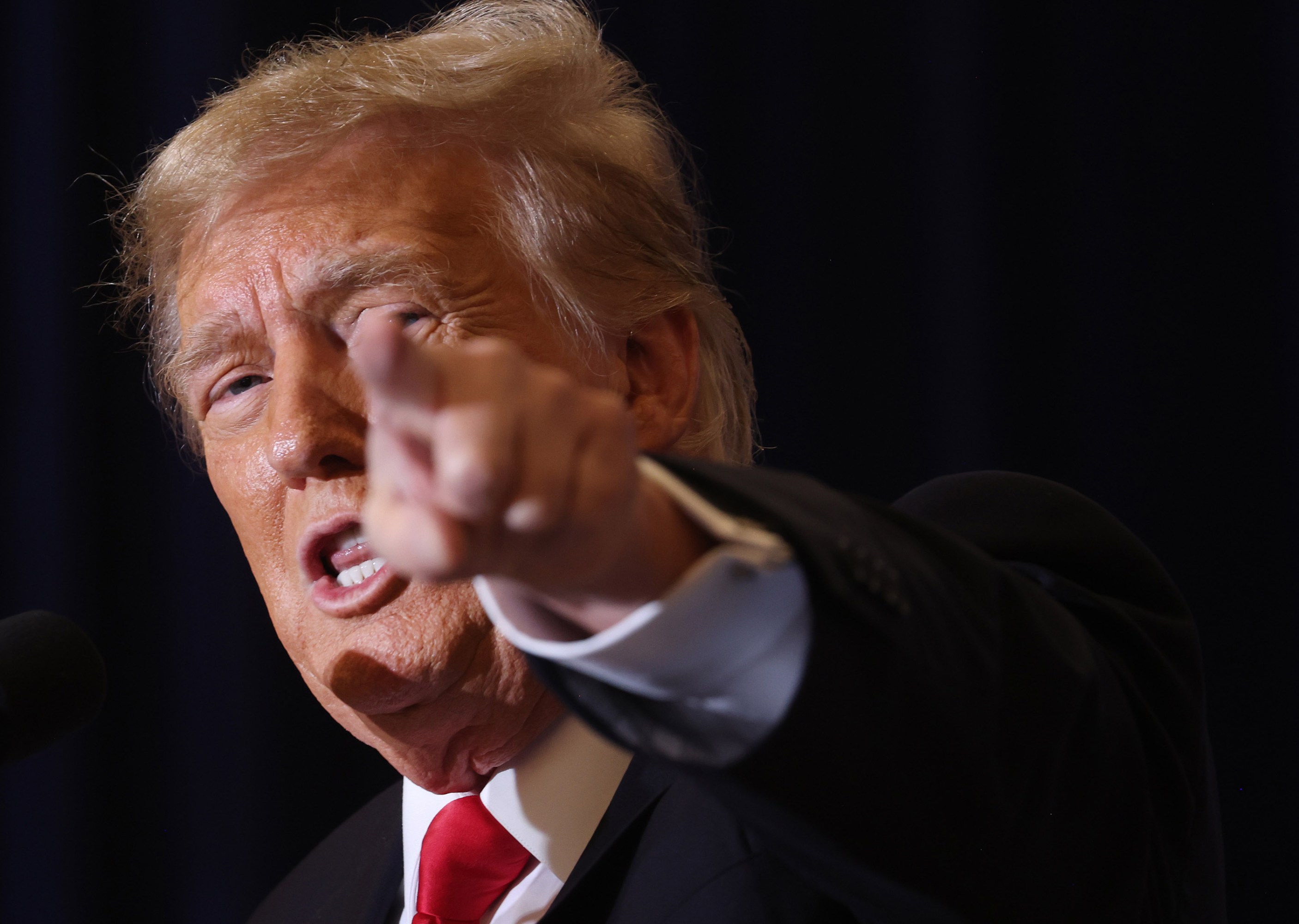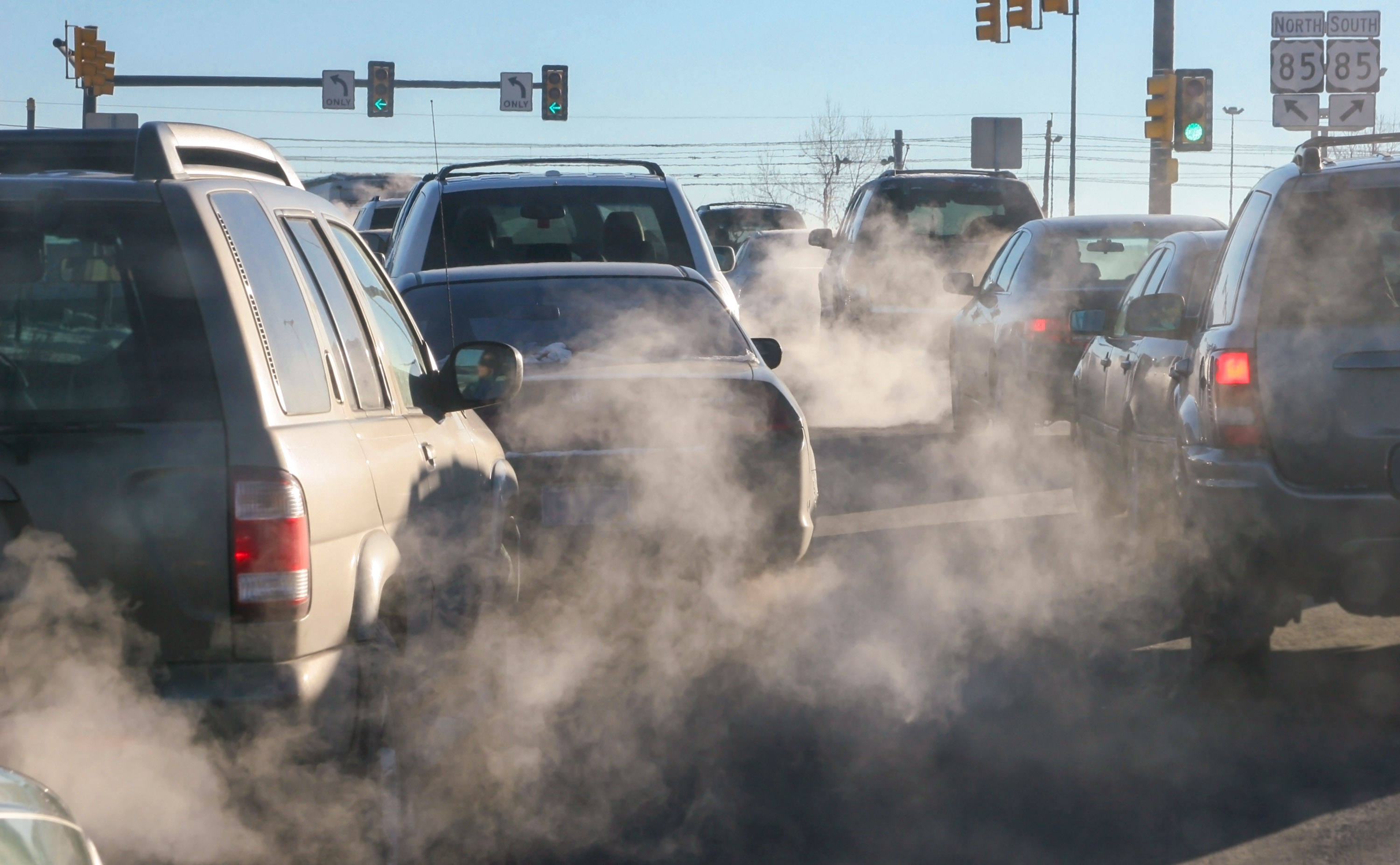Trump wants to unravel Biden’s landmark climate law. Here is what’s most at risk.
The Inflation Reduction Act’s support for EVs and clean power could land on the chopping block if the Republican front-runner returns to the White House.

President Joe Biden’s crowning legislative achievement was enacting the Inflation Reduction Act, easily the nation’s largest investment into addressing the rising dangers of climate change.
Yet Donald Trump’s advisors and associates have clearly indicated that dismantling the landmark law would sit at the top of the Republican front-runner’s to-do list should he win the presidential election. If he succeeds, it could stall the nation’s shift to cleaner industries and stunt efforts to cut the greenhouse-gas pollution warming the planet.
The IRA unleashes at least hundreds of billions of dollars in federal subsidies for renewable energy sources, electric vehicles, batteries, heat pumps, and more. It is the “backbone” of the Biden administration’s plan to meet the nation’s commitments under the Paris climate agreement, putting the US on track to cut emissions by as much as 42% from 2005 levels by the end of this decade, according to the Rhodium Group, a research firm.
But the sprawling federal policy package marks the “biggest defeat” conservatives have suffered during Biden’s tenure, according to Myron Ebell, who led the Environmental Protection Agency transition team during Trump’s administration. And repealing the law has become an obsession among many conservatives, including the authors of the Heritage Foundation’s Project 2025, widely seen as a far-right road map for the early days of a second Trump administration.
The IRA’s tax credits for EVs and clean power projects appear especially vulnerable, climate policy experts say. Losing those provisions alone could reshape the nation’s emissions trajectory, potentially adding back hundreds of millions of metric tons of climate pollution this decade.
Moreover, Trump’s wide-ranging pledges to weaken international institutions, inflame global trade wars, and throw open the nation’s resources to fossil-fuel extraction could have compounding effects on any changes to the IRA, potentially undermining economic growth, the broader investment climate, and prospects for emerging green industries.
Farewell to EV tax credits
The IRA leverages government funds to accelerate the energy transition through a combination of direct grants and tax credits, which allow companies or individuals to cut their federal obligations in exchange for buying, installing, investing in, or producing cleaner power and products. It is enacted law, not a federal agency regulation or executive order, which means that any substantial changes would need to be achieved through Congress.
But the tax cuts for individuals pushed through during Trump’s time in office are set to expire next year. If he wins a second term, legislators seeking to extend those cuts could crack up the tax code and excise key components of the IRA, particularly if Republicans retain control of the House and pick up seats in the Senate. Eliminating any of those tax credits could help offset the added cost of restoring those Trump-era benefits.
Numerous policy observers believe that the pair of EV tax credits in the IRA, which together lop $7,500 off the cost of electric cars and trucks, would be one of the top targets. Subsidizing the cost of EVs polls terribly among Republicans, and throughout the primaries, most of the party’s candidates for president have fiercely attacked government support for the vehicles—none more than Trump himself.

On the campaign trail, he has repeatedly, erroneously referred to the policy as a mandate rather than a subsidy, while geographically tailoring the critique to his audience.
At a December rally in Iowa, the nation’s biggest corn producer, he pledged to cancel "Crooked Joe Biden’s insane, ethanol-killing electric-vehicle mandate on day one."
And in the battleground state of Michigan in September, he pandered to the fears of autoworkers.
“Crooked Joe is siding with the left-wing crazies who will destroy automobile manufacturing and will destroy the country itself,” Trump said. “The damn things don’t go far enough, and they’re too expensive.”
Other Trump targets
Other IRA components likely to fall into Trump’s crosshairs include tax credits for investing in or operating emissions-free power plants that would come online in 2025 or later, says Josh Freed, who leads the climate and energy program at Third Way, a center-left think tank in Washington, DC.
These so-called technology-neutral credits are intended to replace earlier subsidies dedicated to renewables like solar and wind, encompassing a more expansive suite of energy-producing possibilities like nuclear, bioenergy, or power plants with carbon capture capabilities.
Those latter categories are more likely to have Republican support than, say, solar farms. But any policy primarily designed to accelerate the shift away from fossil fuels would likely be a ripe target in a second Trump administration, given the industry’s support for the candidate and his ideological opposition to climate action.
A number of other provisions could also come under attack within the law. Among them:
- additional measures supporting the growing adoption of EVs, including tax credits for individuals and businesses that install charging infrastructure;
- fees on methane emissions from wells, processing plants, and pipelines, when they exceed certain thresholds;
- a series of environmental-justice grants and bonus tax credits available for projects that help reduce pollution, provide affordable clean energy, and create jobs in low-income, marginalized areas;
- a reinstated Superfund excise tax on crude oil and petroleum products, which could raise billions of dollars to fund the cleanup of hazardous-waste sites;
- and a series of tax credits incentivizing consumers to add solar panels, install heat pumps, and improve the energy efficiency of their homes.
Pushback
Observers are quick to note, however, that a wholesale repeal of the IRA is unlikely, because—well—it’s working.
By some accounts, the law has helped spur hundreds of billions of dollars in private investment into projects that could create nearly 200,000 jobs—and get this: eight of the 10 congressional districts set to receive the biggest clean-energy investments announced in recent quarters are led by Republicans, according to one analysis (and backed up by others).
A disproportionate amount of the money is also flowing into low-income areas and “energy communities,” or regions that previously produced fossil fuels, according to data from the MIT Center for Energy and Environmental Policy Research and the Rhodium Group.
As more and more renewables projects, mineral processing facilities, battery plants, and EV factories bring jobs and tax revenue to red states, the politics around clean energy are shifting, at least behind the scenes if not always in the public debate.
All of which means some sizable share of Republicans will likely push back on more sweeping changes to the IRA, particularly if they would raise the costs on businesses and reduce the odds that new projects will move forward, says Sasha Mackler, executive director of the energy program at the Bipartisan Policy Center, a Washington, DC, think tank.
“Most of the tax credits are pretty popular within industry and in red states, which are generally the constituency that the Republican Party listens to when they shape their policies,” Mackler says. “When you start to go beyond the top-line political rhetoric and look at the actual tax credits themselves, they’re on much firmer ground than you might initially think just reading the newspaper and looking at what’s being said on the campaign trail.”
That means it might prove more difficult to rescind some of the hit-list items above than Trump would hope. And there are other big parts of the legislative package that Republicans might avoid picking fights over at all, such as the support for processing critical minerals, manufacturing batteries, capturing and storing carbon dioxide, and producing biofuels, given the broader support for these areas.
DC sources also say that clean-energy-focused policy shops and some climate tech companies themselves are already playing defense, stressing the importance of these policies to legislators in the run-up to the election. Meanwhile, if staffers at the Department of Energy and other federal agencies aren’t already rushing to get as much of the grant-based money in the IRA out the door as possible, they should be, says Leah Stokes, an associate professor of environmental politics at the University of California, Santa Barbara, who advised Democrats on crafting the law.
Among other funds, the law appropriates nearly $12 billion for the DOE’s loans office, which provides financing to accelerate the development of clean-energy projects. It also sets aside $5 billion in EPA grants designed to help states, local governments, and tribes implement efforts to cut greenhouse-gas pollution.
“If DOE and EPA work fast enough, that money should be difficult to somehow claw back, because it will have been spent,” Stokes says.
Impact
Still, there’s no question that Trump and legislators eager to curry his favor could do real damage to the IRA and the clean-energy industries poised to benefit from it.
How much damage depends, of course, on what he succeeds in unraveling.
But take the example of the power sector subsidies. A study last year in the journal Science noted that with the IRA’s support for clean electricity, around 68% of the country’s power generation would come from low-emission sources by 2030, as opposed to 54% without the law.
The Rhodium Group estimates that the IRA could cut power-sector pollution by nearly 500 million tons in 2030, as a central estimate.

How much these projections change would depend on which and how many of the provisions supporting the shift to cleaner power legislators manage to remove. In addition to the technology-neutral credits noted above, the IRA also provides federal support for extending the life of nuclear plants, deploying energy storage, and adding carbon capture and storage capabilities.
Meanwhile, an earlier report from RMI (formerly known as the Rocky Mountain Institute) offered a hint at what’s at stake for the EV sector. The research group noted that the assorted provisions within the IRA, when combined with the EPA’s proposal to tighten tailpipe rules, could propel electric passenger vehicles to 76% of all new sales by 2030. Without it, they will only make up about half such sales by that point. (Notably, however, the Biden administration is now reportedly considering relaxing those rules to give automakers more time to ramp up EV production.)
All told, some 37 million additional EVs could hit the nation’s roads between now and 2032, eliminating more than 830 million tons of transportation emissions by that year and 2.4 billion tons by 2040, RMI estimates.
That adds up to a huge difference in the market prospects for EV makers, and in the economics of building new plants.
The loss of the EV credits could create another notable ripple effect. For a purchased vehicle to qualify for one of the $3,750 tax credits, at least 60% of the battery components must be manufactured or assembled in North America. The other credit is available only if the batteries include a significant share of critical minerals extracted or processed in the US or through free-trade partners, or recycled in North America.
The varied goals of these “domestic content requirements,” which helped drive the law past the legislative finish line, included ensuring that the US produces more of materials and components for cleantech industries domestically, creating more jobs, reducing the nation’s reliance on China, and safeguarding US energy security as the country moves away from fossil fuels.
Losing the tax credits could dim hopes for reaching those goals—though some critics argue that trade deals and IRS interpretations have already watered down the credits’ provisions, ensuring that more manufacturers and models qualify.
Trump’s broader agenda
Trump has made clear he intends to hamstring additional climate efforts and bolster the oil and gas sector through numerous other means, potentially including federal regulations, executive orders, and Department of Justice actions. All of these would only magnify any impact from changes he might make to the IRA.
If he wins in November, he’s also likely, for instance, to direct the EPA to eliminate those tailpipe rules altogether. He may work to slow down, cut off, or claw back some of the $7.5 billion allocated under the Bipartisan Infrastructure Law to build out a national EV charging network.
Trump could also remove and refuse to replace the staff necessary to implement and oversee programs and funding throughout the DOE, the EPA, the National Oceanic and Atmospheric Administration, and other federal agencies. And he would very likely pull the US out of the Paris climate agreement again.
How much of this Trump accomplishes could depend, in part, on how emboldened he feels upon entering office for a second term, when he’d likely still be battling multiple criminal cases against him.
“It just depends if we assume he’s going to respect the law and color within the lines of our legal system, or if he’s going to be a fascist,” Stokes says. “That’s a huge question—and we should take it very seriously.”
In the end, it may also prove difficult to disentangle the effects of rolling back climate policies from any success he achieves in implementing his broader policy agenda. Trump has pledged to impose a 60% or higher tariff on Chinese goods, as well as a “pro-America system of universal baseline tariffs on most foreign products.” He has said he would encourage Russia to attack NATO allies and is reportedly considering pulling the US out of the military alliance. He’s discussed deploying military forces to suppress US protests, seal the southern border, and attack drug cartels in Mexico.
The potentially chaotic economic and geopolitical effects of such policies, at a point of spiraling global conflicts, could easily dwarf any direct consequences of altering climate laws and regulations.
As Freed puts it: “A world that is less stable and much more dangerous, economically and militarily, would have incalculable damage on climate and energy issues in a second Trump term.”
And on much else.
Deep Dive
Climate change and energy
The problem with plug-in hybrids? Their drivers.
Plug-in hybrids are often sold as a transition to EVs, but new data from Europe shows we’re still underestimating the emissions they produce.
Harvard has halted its long-planned atmospheric geoengineering experiment
The decision follows years of controversy and the departure of one of the program’s key researchers.
Why hydrogen is losing the race to power cleaner cars
Batteries are dominating zero-emissions vehicles, and the fuel has better uses elsewhere.
Decarbonizing production of energy is a quick win
Clean technologies, including carbon management platforms, enable the global energy industry to play a crucial role in the transition to net zero.
Stay connected
Get the latest updates from
MIT Technology Review
Discover special offers, top stories, upcoming events, and more.